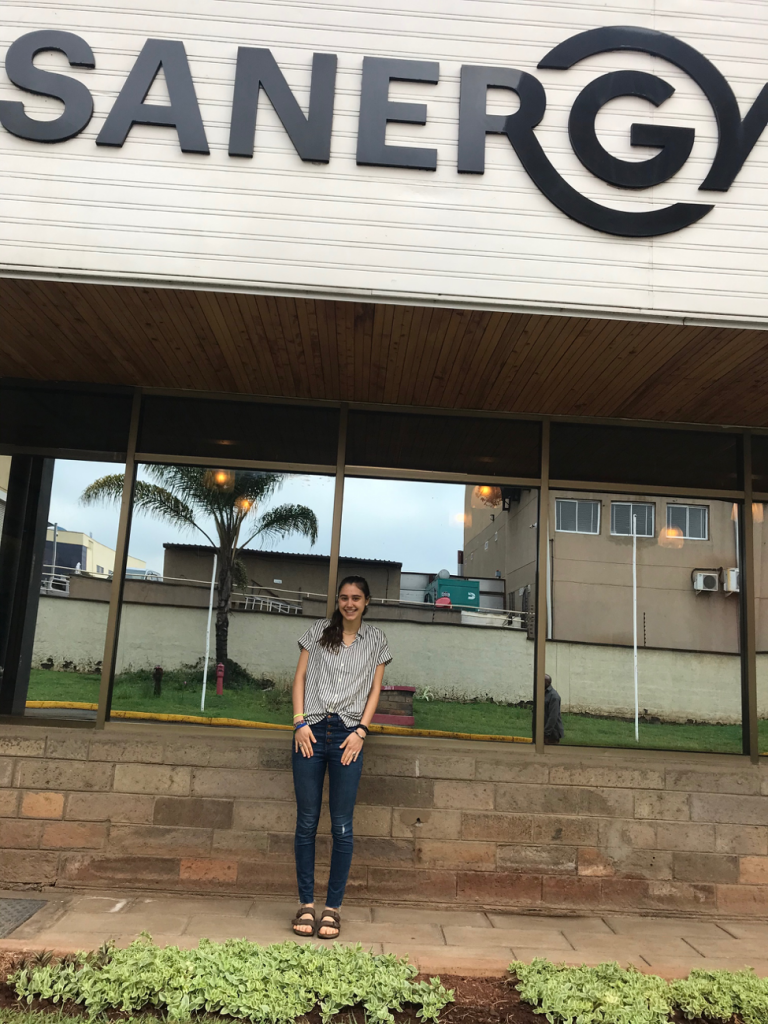IAP Fellow 2020: Kiara Wahnschafft
This January, I’m working at an organization called Sanergy, based in Nairobi Kenya. Sanergy improves the health and prosperity of residents living in growing cities by making safe sanitation accessible and affordable. Sanergy’s main product is their container-based toilets, called Fresh Life Toilets. In just 9 years of operating in Nairobi’s informal settlements, Sanergy has installed over 3,000 of these toilets across 11 informal settlements in Nairobi. On a regular basis, they safely collect and remove waste from the toilets and ultimately create value from it, converting it into high-value agricultural inputs.
Though Sanergy has successfully provided sanitation to so many people and continues to expand their container-based toilet offering, 60% of the Nairobi slum population still relies on a less-glamerous system: pit latrines. A pit latrine consists of a deep hole dug in the ground and a concrete slab with a hole (for the user) placed on top. Latrines regularly fill up and need to be emptied, but are only accessible by people – thus, manual laborers empty the pits and, with no formal place to dispose of it, often dump it in the river or elsewhere in the community. Severe environmental contamination and health hazards ensue, with raw sewage often flowing through slums when flooding occurs.
In my month at Sanergy, I will be working on this problem on Sanergy’s Future Initiatives team. The Future Initiatives team currently operates a pilot site where pit emptiers can come to safely dispose waste, often referred to as “sludge,” from the pits. The pilot is testing out various strategies and technological methods for handling the sludge, specifically for removing trash and for drawing out water to decrease the sludge’s weight and volume. As a fellow, my project is on the design of future replications of this site: Sanergy aims to create more of these emptying sites in other settlements around Nairobi and so I will utilize knowledge gained from the pilot to design them. Of course, in a startup, there are always many question marks as everyone figures things out as you go: iterate, test, iterate, test, etc. So, Sanergy isn’t certain yet exactly what these future sites will look like or what constraints will be, but that leaves lots of room for creativity! I plan to make lots of different versions of the emptying site/sections of the site that can then be used/mixed and matched once constraints are more defined in the future. Also, because I’m strongly interested in entrepreneurship and business, I’ll be doing some user research to understand the needs of the emptiers and the Sanergy employees operating the site.
I’m definitely excited to take practices that I’ve used in simulations within MIT entrepreneurship courses into the real world! On the financial side, I’ll be working on life cycle cost analysis for the site, which will provide a cost comparison of different design choices. This way, when replication occurs after I’m gone, Sanergy can take into account the pros and cons of different site designs, including cost (as that’s one of the most significant factors in the decision making!). I’m both nervous and thrilled to be jumping into a brand-new sector as I’ve never before worked on sanitation – I know there’s a lot to learn!

Tags: Fellowships IAP 2020, Health, Kenya, PKG Fellowships, Water & Sanitation
